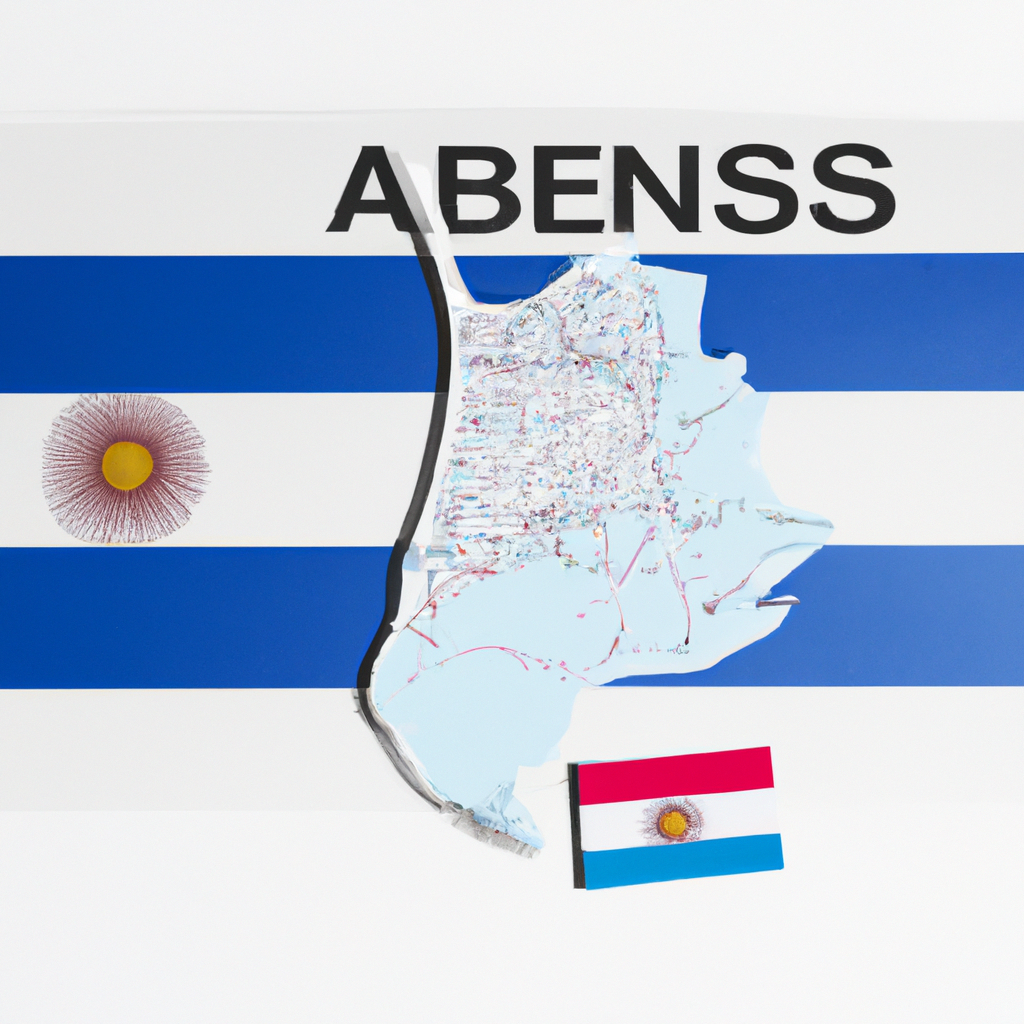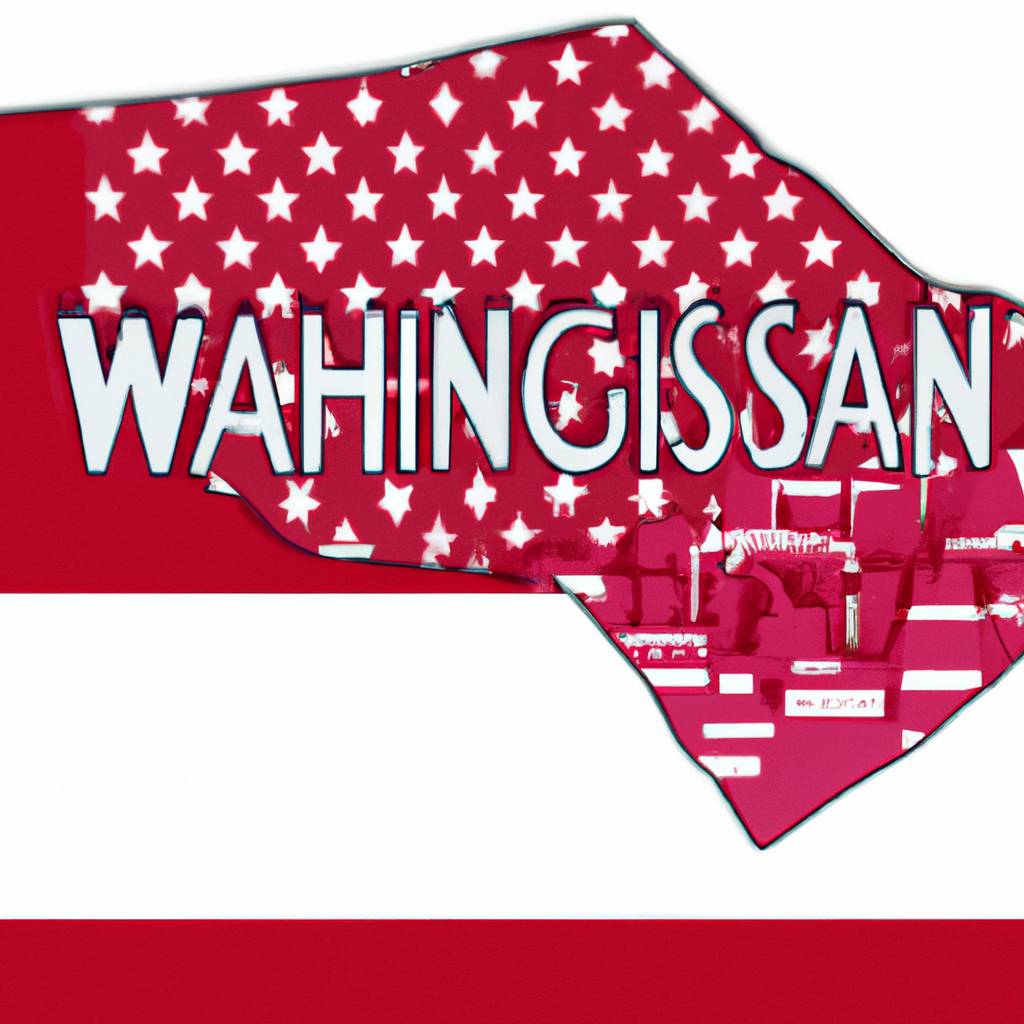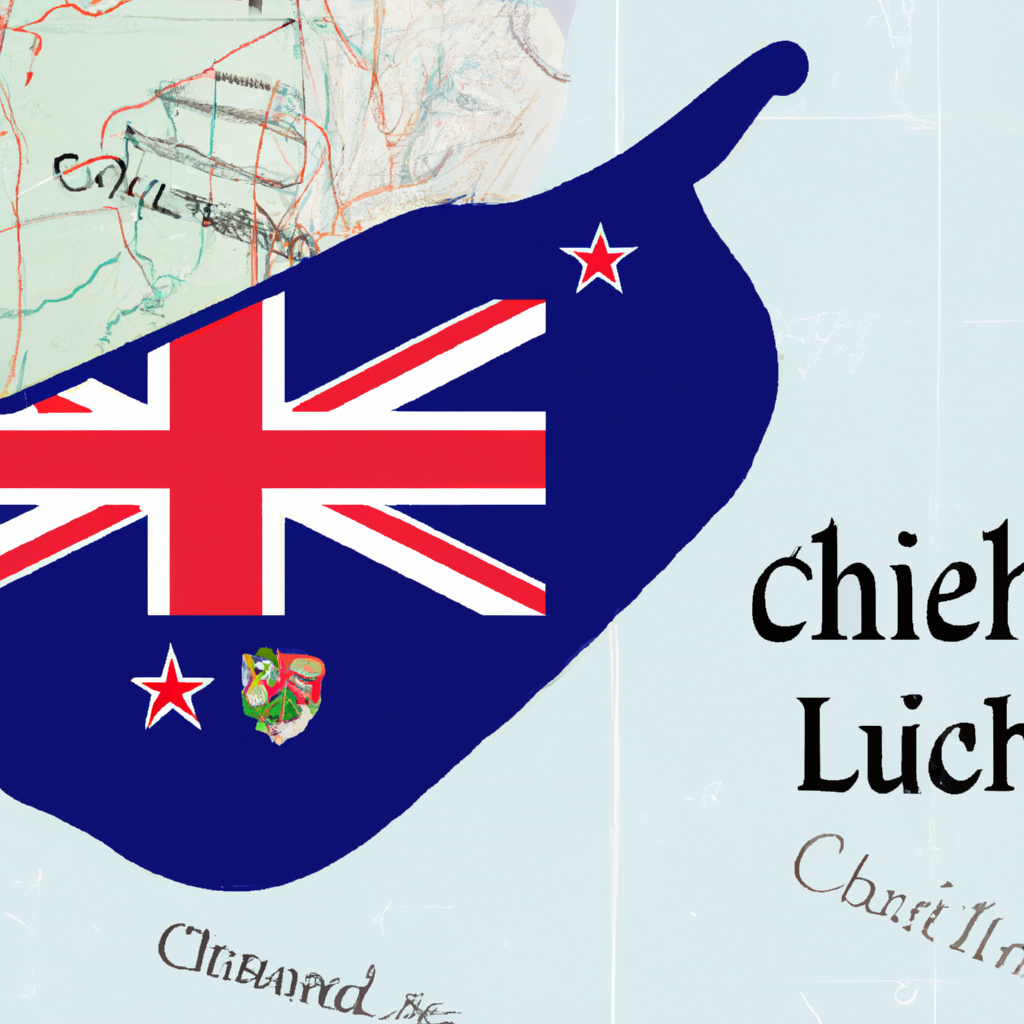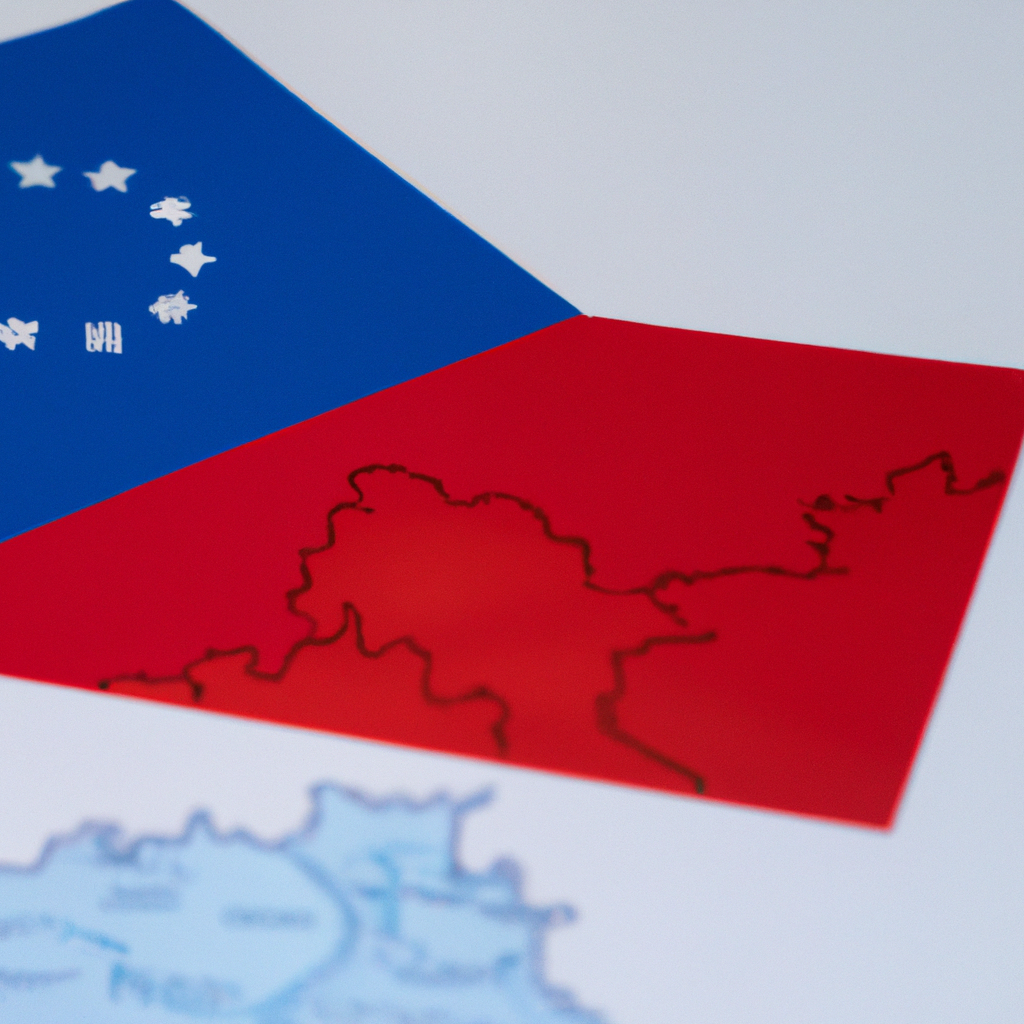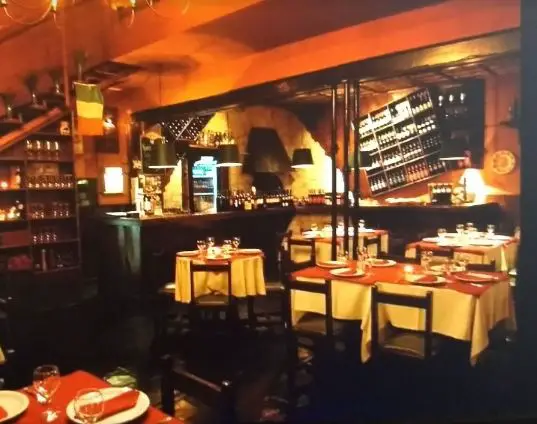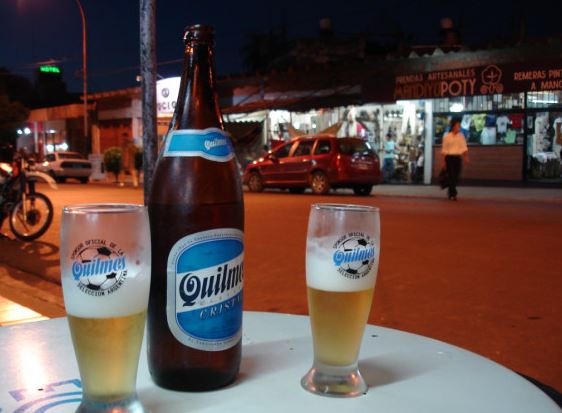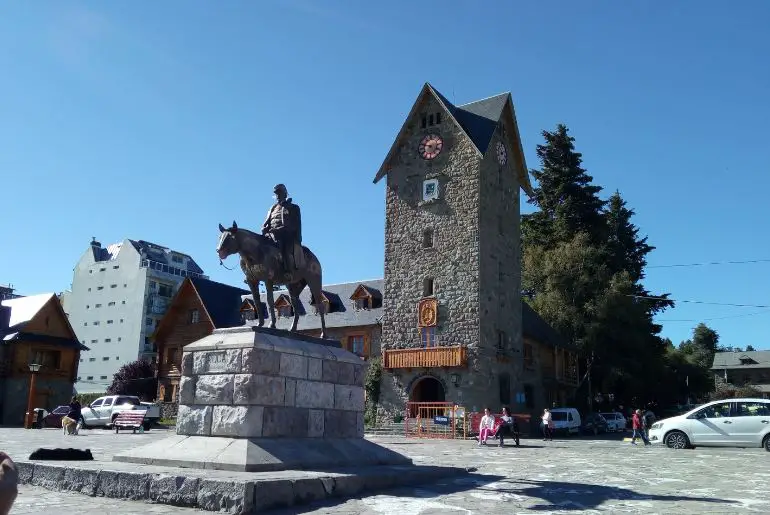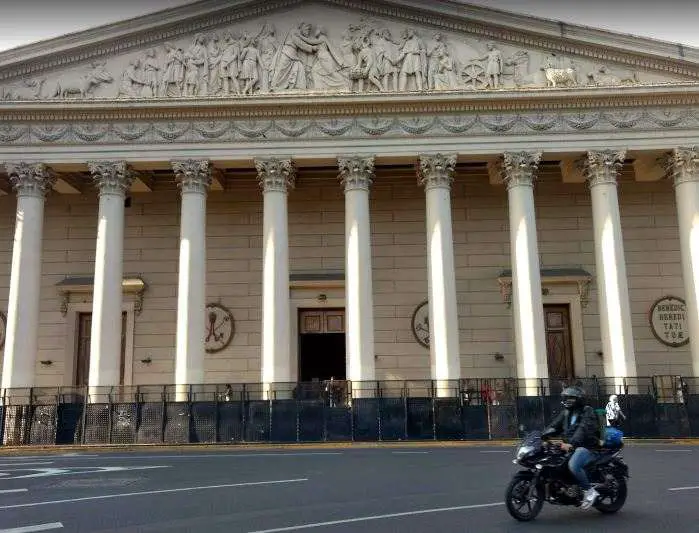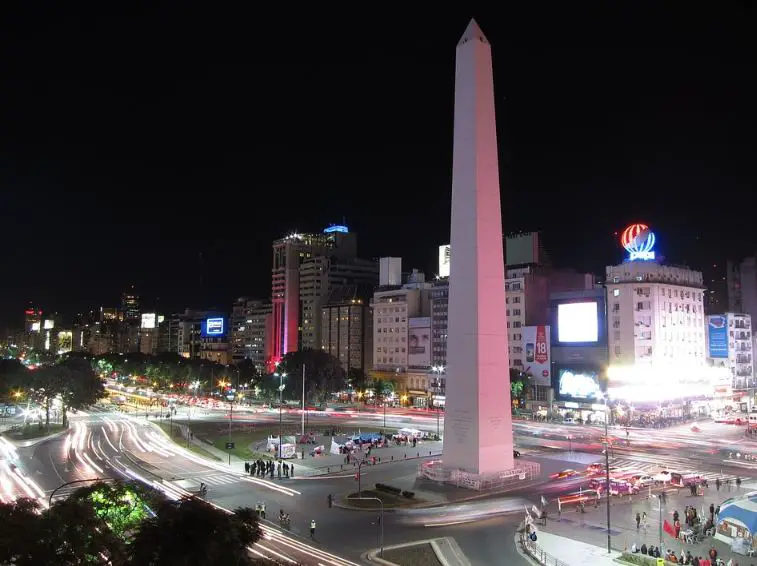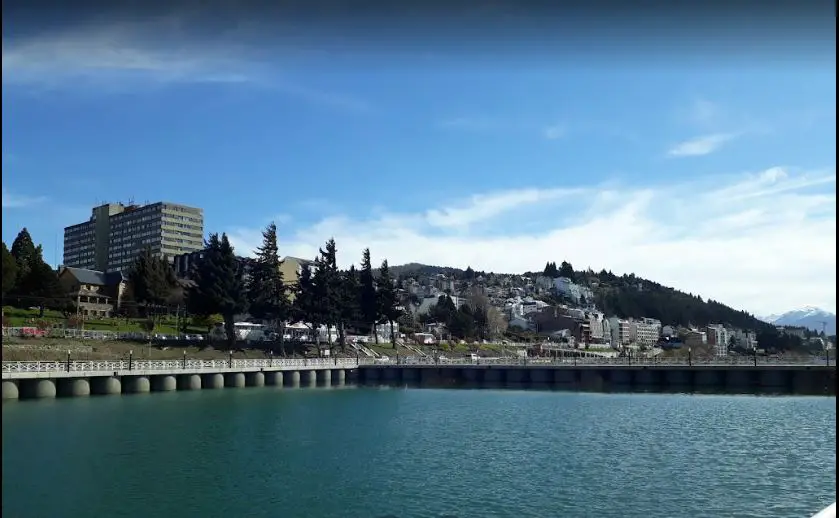Buenos Aires, Argentina: Interesting Facts,History, Things to do,Why to Visit
Post ByAdequate Travel
Argentina is a South American country known for its vibrant culture, stunning landscapes, and passionate people. It is the eighth-largest country in the world and shares borders with Chile, Bolivia, Paraguay, Brazil, and Uruguay. Argentina is famous for its tango dancing and music, delicious cuisine including juicy steaks and mate tea, and its love for fútbol (soccer).The country has a diverse geography, ranging from the rugged Andes Mountains in the west to the vast grasslands known as the Pampas in the center, and the Iguazu Falls and Patagonian region in the south. Argentina is also home to the southernmost city in the world, Ushuaia.Argentina has a rich cultural heritage with influences from its indigenous peoples, European immigrants (particularly Italian and Spanish), and a strong gaucho (cowboy) culture in the rural areas. The capital city, Buenos Aires, is a cosmopolitan metropolis known for its beautiful architecture, vibrant nightlife, and renowned theaters.However, Argentina has faced economic challenges throughout its history, including periods of inflation and political instability. The country has also undergone various political shifts, with populist Peronist governments and military dictatorships shaping its recent past.In recent years, Argentina has been focusing on diversifying its economy, with agriculture, energy, and services being major sectors. Tourism is also an important industry, with tourists visiting to explore the breathtaking natural wonders, immerse themselves in the lively cultural scene, and experience the warmth of Argentine hospitality.Despite its challenges, Argentina remains an enchanting destination for travelers seeking stunning landscapes, rich history, and a passionate culture.Explore the popular places in argentina, and immerse yourself in its vibrant culture.
Interesting facts
Geography of Argentina
Argentina is the second-largest country in South America and the eighth-largest country in the world. It is located in the southern part of the continent, sharing its borders with Chile, Bolivia, Paraguay, Brazil, Uruguay, and the South Atlantic Ocean. The country encompasses a diverse range of geographical features including mountains, deserts, Pampas grasslands, and the famous Patagonian region.
Rich Biodiversity
Argentina is home to a vast array of plant and animal species, making it one of the world's biodiversity hotspots. The country has various unique ecosystems, from the tropical rainforests of the Northeast to the Andean mountain range in the western border. Some notable examples of Argentina's diversity include the Cacti of the Monte Desert, the Yungas cloud forests, and the wildlife of the Iberá Wetlands.
Tango Dance
Tango, a passionate and seductive dance form, originated in the late 19th century in the working-class neighborhoods of Buenos Aires, Argentina's capital city. It is a cultural expression that combines elements of African, European, and indigenous music and dance styles. Tango gained popularity worldwide, and today, Argentina is known as the birthplace of this iconic dance form.
Gaucho Tradition
The Gaucho, a figure deeply rooted in Argentina's history and culture, is a skilled horseman and rancher. Gauchos are known for their traditional attire, including wide-brimmed hats, ponchos, and leather boots. This symbol of national identity played a significant role in the country's rural development, particularly during the 18th and 19th centuries when the pampas region was actively settled.
Maradona and Football
Argentina's passion for football (soccer) is unrivaled, and it has produced some of the world's greatest players. One legendary figure is Diego Maradona, who led the Argentina national team to victory in the 1986 FIFA World Cup. Maradona's infamous "Hand of God" goal and his spectacular individual effort against England remain iconic moments in football history.
From museums to parks,argentina tourist attractions offer something for everyone, making it a versatile destination for all type of tourists.History of Argentina
The history of Argentina is a complex and diverse one, with influences from indigenous peoples, European colonization, and prominent events such as the War of Independence. Here is a detailed overview of Argentina's history:
1. Pre-Columbian Era
Before the arrival of the Europeans, Argentina's territory was inhabited by indigenous cultures such as the Diaguita, Guarani, and Mapuche. These cultures had their own distinct languages, social structures, and artistic expressions.
2. European Colonization
Argentina was colonized by the Spanish Empire in the early 16th century. The first European settlement was established in 1536, called Buenos Aires. However, due to conflicts with indigenous groups and internal disputes, the settlement was abandoned. It was later reestablished in 1580, and from there, Spain gradually expanded its control over the region.
3. War of Independence
The early 19th century saw a wave of independence movements throughout Latin America, including Argentina. The May Revolution of 1810 marked the beginning of Argentina's struggle for independence from Spain. The war lasted for several years until the Battle of Ayacucho in 1824, when Spanish forces were finally defeated.
4. The Era of Dictatorships
After gaining independence from Spain, Argentina went through a period of political instability and military interventions. Throughout the 19th and 20th centuries, the country experienced multiple dictatorships and alternating periods of democratic rule. Some of the notable dictatorships include the Infamous Decade (1930-1943) and the Dirty War (1976-1983).
5. Peronism and Modern Argentina
One of the most significant political movements in Argentina's history is Peronism, named after Juan Domingo Perón. Perón served as the president of Argentina for three terms (1946-1955, 1973-1974), and his policies had a lasting impact on the country's politics and society. Peronism emphasized workers' rights, social justice, and national development.
Examples of Argentina's historical events:
- The May Revolution of 1810 marked the initial steps towards Argentine independence.
- The Battle of Ayacucho in 1824 resulted in the defeat of Spanish forces, securing Argentina's independence.
- The Infamous Decade (1930-1943) saw a series of military dictatorships and political turmoil.
- The Dirty War (1976-1983) refers to a period of state terrorism and human rights violations under military rule.
- Juan Domingo Perón's presidency from 1946 to 1955 and his subsequent return in 1973 significantly shaped Argentina's political landscape.
- The Falklands War in 1982 between Argentina and the United Kingdom had a profound impact on both countries.
In summary, Argentina's history is a complex tapestry of indigenous cultures, European colonization, independence struggles, political upheavals, and social movements. Understanding this history is crucial to comprehending Argentina's contemporary society and its ongoing quest for development.Exploring the rich heritage of historical sites in argentina is a journey through time and culture.Famous Things of Argentina
Tango:
Tango is a passionate and seductive dance form that originated in the working-class neighborhoods of Buenos Aires, Argentina, in the late 19th century. It has become one of the most famous and characteristic aspects of Argentine culture, known for its intricate footwork and emotional expression. Some famous tango dancers and singers from Argentina include Carlos Gardel and Astor Piazzolla.
Gaucho Culture:
The Gaucho culture is deeply rooted in the rural traditions of Argentina. Gauchos are skilled horsemen and ranchers, often seen as symbols of freedom and the Argentine countryside. They wear traditional clothing called "bombachas" and wide-brimmed hats called "boinas." The Mate, a traditional South American drink, is also an important part of gaucho culture.
El Obelisco:
El Obelisco is an iconic monument located in the heart of Buenos Aires. Standing at 67 meters tall, it was built in 1936 to commemorate the 400th anniversary of the city. It has become a symbol of Buenos Aires and is one of the most iconic landmarks in Argentina. The monument is often used as a gathering point for celebrations and demonstrations.
Patagonia:
Patagonia is a vast and diverse region located in southern Argentina. It is known for its stunning landscapes, including mountains, glaciers, and lakes. The region attracts outdoor enthusiasts and nature lovers from around the world. Some famous landmarks in Patagonia include the Perito Moreno Glacier, Fitz Roy Mountain, and Torres del Paine National Park.
La Boca:
La Boca is a colorful neighborhood in Buenos Aires, famous for its vibrant street art and tango culture. Its most famous street, Caminito, is lined with brightly painted houses and hosts various tango dancers and street performers. The neighborhood is a popular tourist attraction and offers a glimpse into the rich cultural heritage of Buenos Aires.
Discover some unique facts about argentina that will leave you amaze and intrigue.The Culture of Argentina
Argentinian culture is a diverse and vibrant blend of indigenous traditions, European influences, and immigrant cultures from across the globe. The country has a rich history of indigenous communities, Spanish colonization, waves of immigration from Europe, and the fusion of diverse cultures, resulting in a unique national identity. Here are some key aspects of Argentine culture:1. Gauchos
The iconic figure of the gaucho represents the rural and cowboy culture of Argentina. Gauchos are skilled horsemen and are known for their distinctive clothing, such as the wide-brimmed hat and the bombacha trousers. This cultural symbol is often associated with the vast pampas, where gauchos herded cattle and lived a traditional way of life.2. Tango
Tango is an emblematic dance and musical genre that originated in the working-class neighborhoods of Buenos Aires and Montevideo in Uruguay. It is considered to be the national dance of Argentina and has gained worldwide recognition. Tango combines African, European, and indigenous influences, and it is often performed in milongas, which are dedicated social venues for tango dancing and music.3. Mate
Mate (pronounced maa-teh) is a traditional South American drink that is particularly popular in Argentina. It is made by steeping dried leaves of the yerba mate plant in hot water and consumed through a metal straw called the bombilla. Mate is not only a drink but also a social custom, as it is often shared among friends and family in a circle, creating a sense of community.4. Asado
Asado, also known as a barbecue, is an essential part of Argentine cuisine and culture. It involves grilling various cuts of meat, such as beef ribs, sausages, and flank steak, over an open fire or charcoal. Asado gatherings are a social event where friends and family come together to enjoy delicious meat, share conversations, and celebrate special occasions.5. Football (Soccer)
Football is a passion for Argentinians, and it is deeply embedded in the country's culture. Argentina has a strong tradition and success in international football, with world-renowned players like Diego Maradona and Lionel Messi hailing from the country. The fervent support for local teams and the national team creates an electric atmosphere during matches, and football stadiums can be seen as cathedrals of national unity.In conclusion, Argentina's culture is a rich tapestry woven from various influences, historical events, and customs. It encompasses traditional aspects such as gauchos, tango, and mate, as well as contemporary elements like football. The fusion of Indigenous, European, and immigrant cultures has shaped Argentina into a culturally diverse and captivating nation.Immerse yourself in the local culture by exploring argentina's top-rated tourist attractions.Cuisine of Argentina
Argentine cuisine is influenced primarily by Spanish, Italian, and indigenous culinary traditions. It is known for its flavorful dishes and the consumption of a variety of meats, especially beef.
Meat
Argentina is famous for its high-quality beef and steak. Asado, a traditional barbecue, is a centerpiece of Argentine cuisine. It involves grilling different cuts of beef, such as ribeye, sirloin, and flank steak, over an open fire. Another popular meat dish is milanesa, which is breaded and fried meat cutlets similar to Italian schnitzel.
Empanadas
Empanadas are a beloved staple in Argentine cuisine. These handheld turnovers are filled with various ingredients such as ground beef, chicken, cheese, ham, vegetables, or a combination of these. They are often served as appetizers or street food and can have regional variations in their dough and fillings.
Pasta and Pizza
Italian influence is strong in Argentina, and pasta and pizza are widely consumed. Traditional Italian pasta dishes like fettuccine Alfredo and lasagna are popular, as well as Argentine adaptations such as ñoquis (gnocchi) served on the 29th of every month, a tradition known as Noquis del 29. Pizza is also a favorite, with a variety of toppings and styles available, including fugazza (cheese and onion) and the popular fugazzeta rellena (stuffed pizza with additional cheese, ham, and olives).
Maté
Maté is a traditional herbal drink that holds great cultural importance in Argentina. It is made by steeping dried leaves of the yerba maté plant in hot water and consumed through a metal straw called a bombilla. Maté is shared among friends and often viewed as a symbol of friendship and socialization.
Dulce de Leche
Dulce de leche is a sweet and creamy caramel-like spread that is widely used in Argentine desserts. It is made by slowly heating condensed milk until it thickens and obtains a rich, caramel flavor. Dulce de leche is used as a filling for cookies, pastries, and cakes, and can be enjoyed on its own as a spread or topping.
Overall, Argentine cuisine offers a delightful blend of Spanish, Italian, and indigenous flavors. From succulent meats to savory empanadas, and from traditional pasta to the sweet indulgence of dulce de leche, Argentina's culinary offerings are diverse and deeply rooted in its rich cultural history.Explore the popular places in argentina, and immerse yourself in its vibrant culture.1. Explore Buenos Aires
The capital city of Argentina, Buenos Aires, offers a multitude of activities and attractions. Start by strolling along the famous avenue of Avenida 9 de Julio, which is considered to be one of the widest avenues in the world. Visit the historic neighborhood of San Telmo, known for its cobblestone streets and tango culture. Don't miss out on the iconic landmark, Casa Rosada, the presidential palace located in Plaza de Mayo.
2. Marvel at the Iguazu Falls
Located on the border of Argentina and Brazil, the Iguazu Falls are an awe-inspiring natural spectacle. With over 275 individual falls stretching across nearly 2 miles, it is one of the world's largest waterfall systems. Take a boat ride to experience the falls up close or explore the national park surrounding them, which offers various hiking trails and viewpoints.
3. Visit the Glaciers in Patagonia
Patagonia is renowned for its stunning glaciers, with Perito Moreno Glacier being one of the most famous. Witness the breathtaking sight of gigantic ice formations and listen to the cracking sounds as chunks of ice break off and fall into the water below. Take a boat tour or hike on the glacier itself for an unforgettable experience.
4. Discover the Wine Regions
Argentina is known for its excellent wine production, and there are several regions worth visiting for wine enthusiasts. Mendoza, located at the foothills of the Andes, is the most famous wine region in Argentina. Take a wine tasting tour and indulge in delicious Malbecs, Argentina's flagship wine. Other notable wine regions include Salta, San Juan, and Cafayate.
5. Experience the Tango in Buenos Aires
Argentina is the birthplace of tango, and experiencing this passionate dance form is a must while in the country. Attend a tango show in Buenos Aires to witness professional dancers perform and get captivated by the sensual moves and music. Alternatively, you can also take tango lessons and learn a few steps yourself.
When planning your trip to argentina, be sure to include the best things to do in argentina, which encompass a wide range of cultural experiences.Climate of Argentina
Argentina, being a large country that spans several climate zones, experiences a diverse range of climates throughout its various regions. The climate in Argentina can be broadly categorized into four main climate types: Subtropical, Pampean, Arid, and Temperate.1. Subtropical Climate:The northern regions of Argentina, including the province of Misiones and parts of the Gran Chaco region, have a subtropical climate. This climate is characterized by high temperatures and abundant rainfall throughout the year. The average annual temperature in these areas ranges from 68°F (20°C) to 77°F (25°C). The Iguazu Falls, located in the subtropical region, receive significant rainfall and are a popular tourist attraction.2. Pampean Climate:The central region of Argentina, known as the Pampas, has a temperate climate with hot summers and cold winters. The rainfall in this region is moderate, and the temperatures can vary greatly between seasons. The average annual temperature ranges from 55°F (13°C) in the winter to 77°F (25°C) in the summer. The Pampas are known for their agricultural productivity and vast grasslands.3. Arid Climate:The western parts of Argentina, including the regions of Cuyo and Patagonia, have an arid climate. These areas experience very little rainfall and have high temperature variations. The average annual temperature ranges from 57°F (14°C) in Cuyo to 46°F (8°C) in Patagonia. The deserts of Patagonia, such as the Valdés Peninsula, are popular tourist destinations in this region.4. Temperate Climate:The southernmost region of Argentina, including Tierra del Fuego and the southern parts of Patagonia, has a cold temperate climate. The temperatures are mild in the summer and cold in the winter, with the average annual temperature ranging from 41°F (5°C) to 50°F (10°C). This region is characterized by winds and unique ecosystems, including the Glaciers National Park in southern Patagonia.In conclusion, Argentina experiences a wide range of climates due to its large size and geographical diversity. From the subtropical regions in the north to the cold temperate areas in the south, each region has its own distinct climate characteristics. These climate variations have a significant impact on the country's agriculture, tourism, and overall lifestyle.Uncover the best argentina attractions that will leave you awe-inspired and wanting more.Popular activities in Argentina
Argentina offers a wide range of activities for travelers to enjoy, whether they are interested in exploring nature, immersing themselves in the local culture, or experiencing adventure sports. Here are some popular activities in Argentina:
1. Tango Dancing
Tango is Argentina's most famous cultural export, and experiencing a tango show or taking a tango lesson is a must-do activity for many visitors. Buenos Aires, the capital city, is particularly known for its tango scene, with numerous milongas (tango dance halls) where locals and tourists gather to dance the night away.
2. Wine Tasting in Mendoza
Mendoza is Argentina's wine capital and a paradise for wine lovers. The region is famous for its Malbec wines, and there are numerous vineyards and wineries where visitors can take guided tours, learn about the winemaking process, and, of course, enjoy tastings of the various wines produced in the area.
3. Hiking in Patagonia
Patagonia is a breathtaking region located in the southern part of Argentina, known for its stunning landscapes and outdoor adventures. It offers excellent hiking opportunities, from lighter walks around the famous Perito Moreno Glacier to more challenging treks in the Fitz Roy and Torres del Paine National Parks.
4. Wildlife Watching in the Peninsula Valdes
The Peninsula Valdes, located in the northeastern part of Patagonia, is a UNESCO World Heritage Site and home to a diverse array of wildlife. Visitors can observe Southern right whales, sea lions, elephant seals, penguins, and numerous bird species. There are guided tours available to explore the area and spot these incredible animals.
5. Exploring Iguazu Falls
Iguazu Falls, located on the border between Argentina and Brazil, is one of the most spectacular natural wonders in the world. The falls consist of a series of massive waterfalls surrounded by lush rainforest. Visitors can take boat rides to experience the power of the falls up close or walk along the various trails to enjoy panoramic views.
These are just a few examples of the popular activities in Argentina. The country has much more to offer, including horseback riding in the Andes, skiing in Bariloche, visiting the glacier-filled national parks, and immersing oneself in the vibrant cultural scene of Buenos Aires.Plan your trip with a list of the best things to do in argentina, catering to all interests.Nightlife in Argentina
Argentina offers a vibrant and diverse nightlife scene with something for everyone. From bustling cities to coastal beach towns, there are a plethora of options to explore during the night. Here are some key highlights of Argentina's nightlife:
1. Buenos Aires: The City That Never Sleeps
Buenos Aires is famous for its lively nightlife, earning it the reputation of "the city that never sleeps." The capital city offers a wide range of entertainment options, including bars, pubs, clubs, and live music venues. The neighborhoods of Palermo, Recoleta, and San Telmo are particularly known for their vibrant nightlife. Famous tango shows can also be enjoyed in various venues throughout the city.
2. Nightclubs and Electronic Music
Argentina has a thriving electronic music scene, with numerous nightclubs and DJ performances attracting locals and tourists alike. The city of Buenos Aires, in particular, offers renowned clubs like Crobar, Pacha Buenos Aires, and Niceto Club, where electronic music enthusiasts can dance the night away.
3. Milongas and Tango Bars
Tango is an integral part of Argentine culture, and experiencing a traditional milonga or tango bar is a must. These venues provide an authentic ambiance where visitors can enjoy live tango music, watch professionals dance, or even give it a try themselves. Some popular milongas in Buenos Aires include Salon Canning, La Viruta, and El Beso.
4. Coastal Destinations
Argentina's coastal destinations offer vibrant nightlife during the summer season. Cities like Mar del Plata, Punta del Este, and Bariloche become popular hotspots for beach parties, live music events, and outdoor bars. Visitors can enjoy a mix of relaxation and partying by the sea.
5. Live Music
Argentina has a rich music scene, and live concerts featuring various genres can be found throughout the country. From renowned rock and pop bands to folk and traditional music, there are venues catering to diverse tastes. Estadio Monumental in Buenos Aires and Luna Park Stadium are popular venues for large-scale concerts, while smaller bars and theaters host intimate gigs.
In summary, Argentina offers a dynamic and thrilling nightlife for both locals and visitors. Whether you enjoy dancing to electronic beats, immersing yourself in the world of tango, partying by the beach, or experiencing live music performances, there is something for everyone to enjoy in Argentina's vibrant nightlife scene.Step back in time as you visit the historical sites in argentina, where the past comes alive.Why to Visit Argentina
Argentina is a diverse and captivating country that offers something for every type of traveler. Here are some reasons why you should visit Argentina:
1. Natural Wonders
Argentina boasts a wide range of natural wonders, from the breathtaking Iguazu Falls in the north to the stunning glaciers of Patagonia in the south. The country is also home to the mighty Andes Mountains, which offer incredible opportunities for hiking, skiing, and mountaineering.
2. Vibrant Cities
Argentina is known for its vibrant and cosmopolitan cities, such as Buenos Aires, Mendoza, and Cordoba. Buenos Aires, the capital city, is often referred to as the "Paris of South America" due to its elegant architecture, vibrant nightlife, and rich cultural heritage. Visitors can explore historic neighborhoods, enjoy world-class cuisine, and experience tango dancing in the city's lively milongas.
3. Gastronomic Delights
Food lovers will find Argentina a paradise. The country is internationally renowned for its delicious beef and traditional Asado (barbecue). Argentinians take great pride in their meat, and it's a common sight to see locals enjoying a mouthwatering steak at a traditional parrilla (steakhouse). There are also plenty of opportunities to try other local delicacies, such as empanadas, dulce de leche, and yerba mate.
4. Rich Cultural Heritage
Argentina is a melting pot of diverse cultures and influences, resulting in a rich and vibrant cultural heritage. Visitors can explore ancient ruins and learn about the indigenous peoples who once inhabited the land. The country also has a strong European influence, particularly from Italy and Spain, which is evident in its architecture, art, and customs.
5. Thriving Wine Regions
Wine enthusiasts will be delighted by Argentina's thriving wine regions. Mendoza, located at the foothills of the Andes, is known for its Malbec wines, which have gained international acclaim. Visitors can take guided tours of vineyards, attend wine tastings, and learn about the wine-making process while enjoying breathtaking landscapes.
6. Adventure Tourism
For adrenaline junkies, Argentina offers an array of thrilling adventure activities. From hiking in the pristine wilderness of Patagonia to horseback riding in the vast Pampas region, there are endless opportunities for outdoor adventures. Water sports enthusiasts can also enjoy kayaking, white-water rafting, and fishing in the country's numerous rivers and lakes.
Overall, Argentina offers a diverse range of experiences, from its natural wonders to its vibrant cities, rich culture, and delicious cuisine. Whether you are seeking adventure, relaxation, or exploration, Argentina has something to offer everyone.Whether you're a history buff or an adventure seeker, argentina has an attraction for you. So, don't miss the chance to visit popular places in argentinaNumber of Days Required to Visit Argentina
Visiting Argentina is a great adventure as it offers diverse landscapes, vibrant cities, and rich culture. The ideal number of days required to visit Argentina may vary depending on personal preferences, available time, and the specific regions and attractions you plan to explore. However, a recommended duration for a comprehensive visit to Argentina would be around 15 to 21 days.
1. Buenos Aires
The capital city of Argentina, Buenos Aires, is a must-visit destination. It is known for its European-inspired architecture, tango dance, vibrant nightlife, and delicious cuisine. Spending at least 3 to 4 days in Buenos Aires will allow you to explore its famous neighborhoods such as La Boca, Palermo, and Recoleta, and experience the city's cultural and historical landmarks.
2. Patagonia
The stunning region of Patagonia is a highlight of any trip to Argentina. It is home to breathtaking landscapes, including the Perito Moreno Glacier, Tierra del Fuego National Park, and the beautiful mountain range of the Andes. To fully enjoy the beauty of Patagonia and engage in activities like hiking and wildlife spotting, it is recommended to spend around 7 to 10 days in this region.
3. Iguazu Falls
Iguazu Falls, located on the border of Argentina and Brazil, is one of the world's most impressive natural wonders. With over 270 individual waterfalls, it offers a mesmerizing experience. To explore both the Argentine and Brazilian sides of the falls and take part in exciting jungle activities, allocate at least 2 to 3 days for Iguazu Falls.
4. Mendoza
Mendoza is Argentina's wine country, famous for its Malbec wines and stunning vineyards. If you are a wine enthusiast or simply want to enjoy beautiful landscapes and indulge in culinary experiences, plan to spend around 3 to 4 days in Mendoza.
5. Other Destinations
Argentina has many more incredible destinations to explore, such as Salta and Jujuy in the north, the Lake District, and the Atlantic Coast. Depending on your interests and available time, you can allocate a few days to each of these regions.
Remember, these suggested durations can be adjusted based on personal preferences and how extensively you wish to explore each destination. It is always a good idea to plan your itinerary in advance and research the specific attractions and activities you want to experience in Argentina.
Discover the untold stories behind argentina unique facts, and historical treasures.